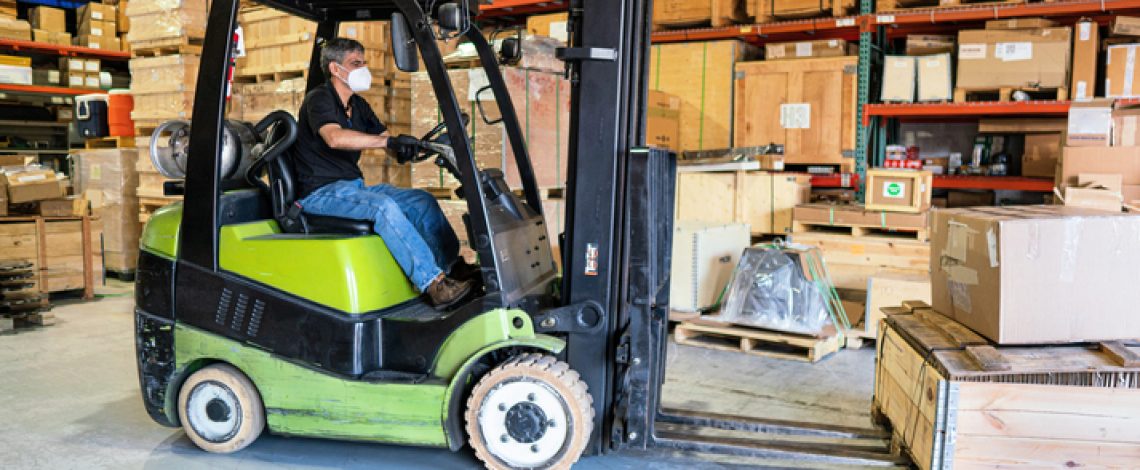You have worked diligently to get your shipment ready for transport. If you think the job ends there, you are wrong.
Getting your goods ready for transit is only part of the overall process. It must arrive safely and on time in order to meet expectations. Do you know the correct way to package the product, including if it should go on a skid, pallet or inside a crate?
That question may not seem very important, but it can make a big difference in securing the load and ease of transport.
If you are not familiar with the terms, all three sound similar, and many people mixed them up or think they are the same thing. Most are made of wood and skids and pallets even look almost the same. How are you to know which is the right choice for your freight?
Let’s take a look at the differences between a skid vs pallet.
The Skid
The wooden skid has been around a long time and is known as the original pallet. Back in the 1930s, it was practically the only option available. The main difference between a skid and a pallet is the single top platform or deck. The skid has no bottom deck.
The solid top deck is held together by four wooden legs or slats. Because there is no lower platform, it weighs less than a pallet, has less friction and therefore is easier to drag. This makes it a good option for moving material around in a warehouse.
Mobility is the best feature of a skid. It can be used to move bulky items around in a warehouse. It is also frequently used as the foundation for large products, like machinery.
With less material involved in making a skid, it is the least expensive option. It has even been referred to as a poor man’s pallet. They can also be stacked easily and take up less space than pallets.
Whether you are shipping multiple small items or one large piece, find out why customers love same-day delivery.
The Pallet
While the skid only has one platform, the pallet steps up the game and has two. It has an upper deck and a bottom deck. The two platforms create more stability so this is a good option for transporting multiple items. The slats also make the pallet easy to move with a forklift.
The double decking of a pallet makes it a good source for racking. The bottom platform gives it balance and prevents tipping when being moved. It can be unloaded and loaded easily into a truck.
Pallets come in a standard size of 48″ x 40″ and can hold up to 2000 pounds. There are other sizes available, however, and can accommodate a variety of loads.
They are heavier than the original skid and harder to drag.
The pallet is by far the more popular choice for shipping freight. On any given day there are over one and half billion pallets in transit.
If your customer has questions about expedited shipping, you now can have the answers.
The Crate
The crate is unlike both the pallet and the skid in that it is not an open platform. It is simply a large wooden box. It has four walls as well as the top and bottom deck. It closes and completely encases your cargo.
It is the best option for securing a shipment that you do not want to be bumped around by the truck’s movement. It is good for fragile items or sensitive equipment.
Crates are extremely stable with the ability to hold a large volume.
Because of their design, they are bulkier and heavier than both the skid and the pallet. If a product does not need to be protected on all sides, a pallet may be preferred over a crate just for ease of use.
How to Package a Shipment
Before a pallet is loaded onto a truck, the boxes themselves must be packaged correctly.
The quality of the boxes is important to the overall safe arrival of the shipment. Use new cartons that are strong enough for the contents and can withstand being stacked. The items within the boxes should not be loose or move around and the carton should be completely sealed.
Pack the cartons on the pallet in even columns from corner to corner. Stack each level as evenly as possible to distribute the weight. The heavier items should always go on the bottom. If possible, lay in a brick-like pattern for better anchoring.
Securing the Load
Now that the pallet is full of boxes, it must be properly secured.
The first step is to have enough space. No part of the shipment should hand over the edges of the pallet. The pallet should also be intact and strong enough for the load. Do not use pallets that have broken boards.
Banding is recommended to secure the shipment down. The strapping should go all the way around the shipment, including underneath the deck boards.
Stretch wrapping is an extra level of protection and a great way to keep all the boxes together. Start by wrapping it around the pallet and then around the load. It should be tight and it can even be twisted for added strength.
Skid vs Pallet – The Decision
When it comes to the best choice for shipping, the pallet wins hands down. While a skid has many uses, it is limited in design and features to be a solid option for product movement.
On the other hand, the pallet provides stability and balance for almost any load. The design promotes balance and with a variety of sizes available, there is a pallet for almost any size shipment. The boards are spaced so they can be easily moved by a forklift.
Your load is important, both to you and your customer. Don’t skimp on cheap material or inferior quality shipping products. The right choice in packaging will ensure your product arrives intact and ready to be used.
For more information on how we can help you with all of your delivery needs, contact us.





